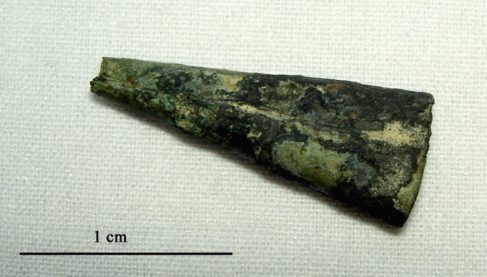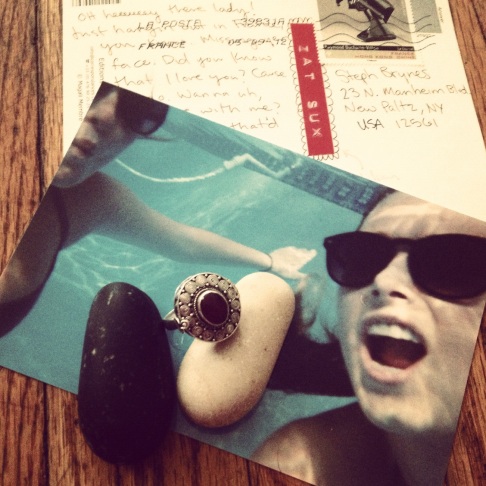When Jennie C. Overton passed around her velveteen autograph book in June of 1889, she was creating a souvenir of her years at university that would last her a lifetime. Fellow classmates inscribed their names, inspiring quotes, and loving memories on each page, sometimes accompanied by photographs or hand-drawn illustrations. What the graduates of the New Paltz Normal School may not have realized at the time, however, was that their signatures, scrawled in perfect script, would document their experience for centuries to come.
The book itself is moderately sized, approximately 8.25 inches in length, 7.25 inches in width, and .5 inches high. The cover, wrapped in plush, soft, blue-grey velvet and imprinted with the word “Autographs,” is starting to fray and become patchy with age. The pages, once crisp and firm, are yellowed around the edges and delicate, smooth but slowly turning to dust. A beautiful cover page, decorated in blues, creams, and browns, pictures a young lady reading, perched comfortably on the letter A for autograph.
And on the first page of the book, written in slanted, neat cursive, the name Jennie C. Overton.
We might picture Jennie, perhaps sitting at her writing desk, perhaps in her bedroom, casually writing her name in her brand new autograph book, unaware of how this one single act would lead a future SUNY New Paltz undergraduate student to research her life and death, her impact on the world. Who was she? Where was she from? What was she studying?
Jane C. Overton, nicknamed Jennie, was born on October 29th, 1865 in New York. Her parents were Wallace and Anna Overton, and she had three siblings: William, ten years her senior; Edna, two years her junior, and Lillie, four years her junior. The family started in Islip, on the south shore of Long Island, NY, but eventually moved to Bayport, NY by the time Jennie was 14. Her father was a farmer and her mother a housewife.
There is not much documentation of Jennie’s life in the years before her arrival at the New Paltz Normal School. Once there, however, Jennie studied English and obtained her degree in 1889. At her commencement ceremony, Jennie presented an essay called “The Universal Language,” in which she discussed the promise of the Volapük language. Volapük is a constructed language that was created in 1879-1880 by Johann Martin Schleyer, with the goal of creating one language that all people of different countries could learn and speak. In her speech, Jennie said, “The world needs a common and simple medium of expression. Many attempts have been made to supply this need, but Volapük is the first and only one that gives evidence of success.”
Jennie returned to New Paltz Normal School a second time, graduating with a second degree in old elementary English in 1893. Her roommate of that year, Bessie Monsell, wrote lovingly in her book, “I shall always look back with the greatest pleasure to the happiest year of my life which was spent with you, and to that time when I found a friend, that was a friend indeed. Remember me ever, as your loving room-mate of 1892-93, Bessie R. Monsell, Greenport, NY.”
Jennie disappeared from records again until 1900, when she is documented living with her parents in Bayport and working as a teacher. At this point in time, aged 35, she was still unmarried.
Another page of her autograph book is signed by Clara T. Hawkins and reads:
“To Miss Jennie C. Overton,
‘Only do thou in thought
And heart, to Him hold fast;
Be patient; more than thou
Hast sought,
Will come to thee at last.’
Lovingly yours,
Clara T. Hawkins,
South Haven, L.I.”
The inscription would prove to be prophetic in a way. Sometime between 1900 and her death twelve years later, Jennie C. Overton would marry Clara T. Hawkins’ brother, Irving Hawins. They never had children.
In July of 1909, the Kingston Daily Freeman noted that a Jennie C. Overton of Bayport, NY, entered Sahler’s Sanitarium in Kingston, NY. It is likely, judging by her death a few years later, that this was the same Jennie.
Jennie’s husband died in 1911, followed shortly by Jennie herself on the 28th of April, 1912. She shares a plot with her husband in the David Hawkins Cemetery in Suffolk County, New York.




